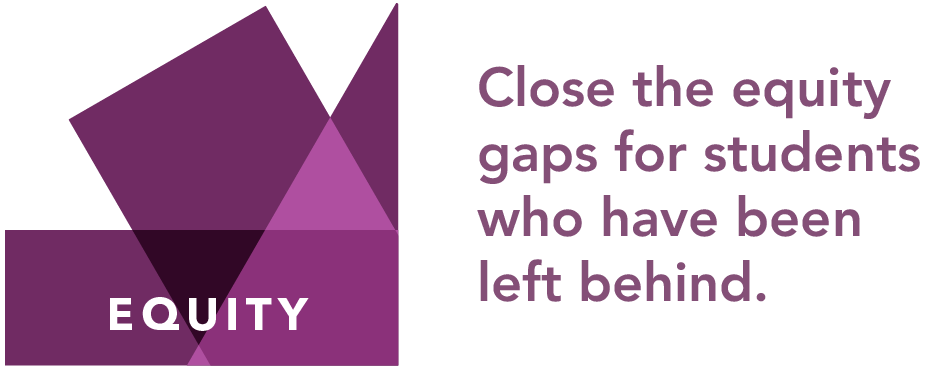This Plan’s Equity Strategies were formed with the following in mind:
-
Today’s higher education system serves students throughout their lives and careers.
We must support a higher education system that serves all students of different ages and at
various points in their careers, who need to re-skill, up-skill or change career paths.
-
We have done much to smooth the path from high school to college and career but more still
needs to be done.
Too many students face barriers in getting to and through higher education.
The data shows significant equity gaps in access to early college experience, placement in developmental
education, rates of retention, advancement and completion, and career outcomes.
-
Tighter alignment and transfer supports will help students navigate multiple on/off ramps through higher
education.
Today there is no “typical” higher education student and no single path that serves all students.
Illinois leads the nation in bachelor’s degree completions among community college transfer students (53.8%),
yet students face challenges in ensuring academic credits transfer; that paths are clear for degree completion;
and that courses and services are available at times and in ways that are responsive to their needs.
-
We have untapped potential in the adults who haven’t yet received a postsecondary degree/credential.
It is both an equity imperative and an economic imperative that the higher education system works to bring back
working adults as students, while recognizing and valuing their unique family, work, and community experiences and needs.
-
We must rebuild our systems for a post-pandemic world. We must take the lessons learned through the
pandemic to build a stronger system that is more agile, supports students, and is prepared for the future of learning.
_
6 The strategies outlined were designed with recognition of equity gaps for many more groups, including Black, Latinx, Asian American, low-income, fi rural, working adult students, students leaving
foster care, students with disabilities, immigrants, undocumented students, justice-involved students, indigenous students, LGBTQ students, and veteran students, recognizing the intersectionality of these identities.
